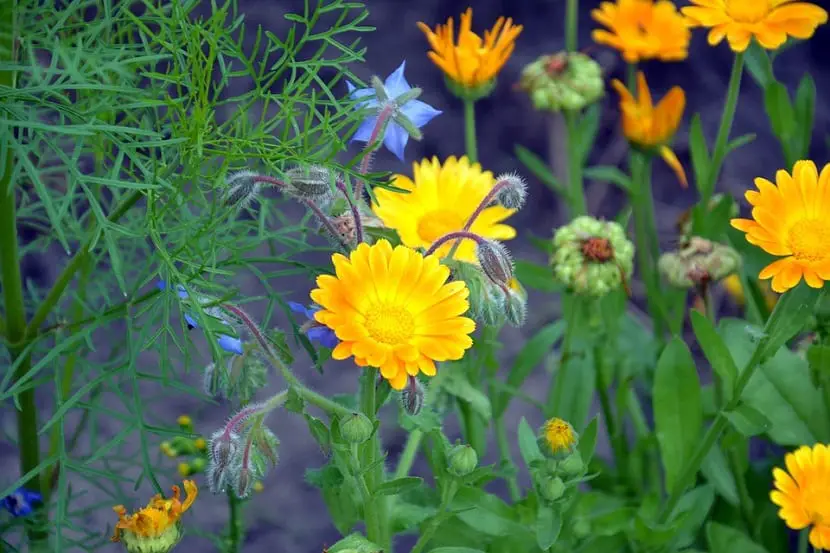
The Calendula officinalis o Calendula is a plant that belongs to the Asteraceae familywhich we also know by other names such as Buttercup, Maravilla or Mercadela.
This plant has its origin in Egypt and is currently cultivated in all countries of the world, therefore We can see it in many gardens and orchards. Among the extensions that it has worldwide, we can say that most of it has its medicinal properties, which are well known and have been used for many years.
Calendula Characteristics

This is one herbaceous plant full of a lot of aromaglandular, which occurs throughout the year and long-lasting, which is usually woody only in the area of the base.
Its stem can measure between 20 or 55 centimeters high, it is generally straight or procumbent, full of branches that generally it is covered by leaves almost to the end of the upper part. The leaves of the calendula have an approximate measurement of about 7 to 14 by 1 to 4 centimeters, they are presented alternately, they are simple, with an oblong-lanceolate appearance, narrowly obovate, oblong or also with an appearance similar to a spatula.
Its flowers are ray yellow, with a flowering stage that can remain throughout the yearclosing at night and then opening at dawn. Its inflorescences come in chapters that can measure between 3 and 5 cm wide, with a yellow color becoming somewhat orange.
The fruits that this plant produces are achenes with a curve, usually mostly they have on the back a kind of membranous wings or dorsal spines that are presented alternately with other cimbiforms that are smaller, with a navicular appearance. Marigold flowers They give off an odor that is not very pleasant and as for its taste it is quite bitter.
Calendula care and cultivation
We can begin the preparation of the seedbeds by protecting them for the last days of winter, in this way we prevent damage from cold and accelerate the germination process of the seedssince these seeds require a temperature that is between approximately 16 ° C to germinate. Another way we can plant them is directly in the ground in the first days of spring.
After this and when the seeds have germinated and we observe that we have our little plant, when spring begins we have to start with the marigolds transplant.
The root of this plant usually grows to about 30 centimetersTherefore, it is something that we must keep in mind if we want to choose a pot and that is that calendula is a plant that can withstand the temperature of a mountain quite well, like dry climates, but also has the ability to withstand low temperatures.

It needs soils that contain enough organic matter, in this way we have to place the amount of fertilizer needed. The earth that covers it has to be sufficiently aerated.
When it comes to watering the plant, we have to do it constantly, especially in the warmer months. On the other hand, the earth has to have enough moisture avoiding waterlogging.
Once the plant is one year old we must prune it in order to remove all the branches that are withered and also to help the new flowers to come out with greater force. Similarly, if we have them in a pot, we must change the soil, adding a little humus to avoid the lack of nutrients.
It is a plant that needs sunlight in a direct way, so that in this way it can develop all its beauty, however, it has the ability to grow in areas that have shade.

3 thoughts on “Calendula: characteristics, care and cultivation”